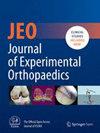Incidence, indications, and risk factors for revision tibial tubercle osteotomy: A national database study
Abstract
Purpose
The aims of the present study are to describe the (1) incidence, (2) indications, and (3) risk factors for revision tibial tubercle osteotomy (rTTO) in a national sample of patients in the United States.
Methods
A retrospective review of the Mariner PearlDiver database was performed. Patients who underwent unilateral primary tibial tubercle osteotomy (TTO) from 2015 to 2021 with a minimum 2-year follow-up were included, and patients who required revision TTO were identified. Patients with insufficient information, history of total knee arthroplasty (TKA), or lower extremity fracture as indication for primary TTO excluded. Demographic variables including age, sex, Elixhauser comorbidity index (ECI), diagnosis and comorbidities were compared between the no revision (NR) and revision TTO groups. Continuous variables were compared via Student's t-test, and dichotomous variables were compared via chi-squared test. Multivariate Cox-proportional hazard modelling was utilized to identify predictors of revision TTO.
Results
4919 patients who underwent TTO were included, 105 of whom required revision TTO. The average age was 26.5 ± 11.5 years, and 3782 (77%) patients were female. The median follow-up time was 4.3 years (interquartile range [IQR]: 3.1–5.6 years). The most common indications for primary TTO included instability (62%) and chondromalacia/pain (33%). The most common indications for rTTO were instability (38%), chondromalacia/pain (28%) and fracture (24%). The median time to rTTO was 91 days [IQR: 20–219 days]. The following variables were associated with an increased risk for revision TTO: hypothyroidism (hazard ratio [HR] 1.8 [range: 1.1–3.0], p = 0.028), renal disease (HR = 3.3 [1.3–8.7], p = 0.014) and stroke (HR = 2.8 [1.3–5.8], p = 0.007).
Conclusion
Instability is the most common indication for rTTO, and most rTTO occur within 91 days of the primary procedure. History of hypothyroidism, renal disease and stroke are all independent risk factors for rTTO. These results highlight the importance close management of higher risk patients in the perioperative period following primary TTO. Preoperative medical optimisation of conditions such as hypothyroidism may mitigate postoperative complications following primary TTO.
Level of Evidence
Level III.


 求助内容:
求助内容: 应助结果提醒方式:
应助结果提醒方式:


